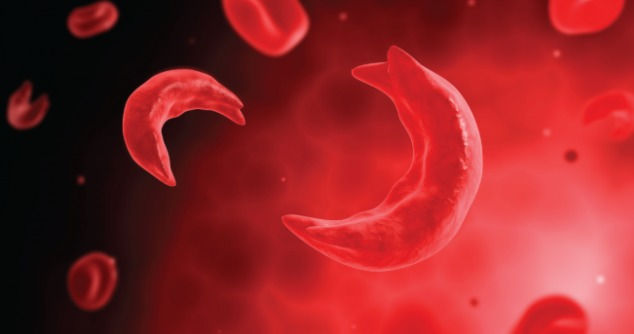Sickle Cell Disease
- STEM To Go

- Jun 27, 2021
- 4 min read
Sickle cell disease is when your red blood cells have an irregular shape and become a “sickle” shape. Your red blood cells' function is to bring oxygen throughout the body. Misshapen cells can change the blood flow because they can block the pathway for blood vessels to deliver oxygen to our body, as they can get stuck in the capillaries because of their shape. Sickle cell anemia was the first genetic disease to be classified on the molecular level. The mutation is considered a point mutation because it is only one nucleotide of DNA, but it changes the properties of hemoglobin. Hemoglobin is the protein in the red blood cells that is responsible for transporting oxygen for cellular respiration. Hemoglobin also transports carbon dioxide from the cells to the lungs to be exhaled. Hemoglobin consists of four different subnets: two alpha and two beta. Sickle cell disease is caused by a point mutation in the beta-globin chain, valine instead of glutamic acid. The disease gets its name because the mutation causes the red blood cells to become stiff and produce a sticky patch on the surface of the beta chain.
What is the cause of Sickle Cell Disease?
The leading cause of sickle cell anemia is the abnormal hemoglobin called hemoglobin S. The mutated genes cause a problem because if the oxygen level decreases, the hemoglobin S will cause nonlipid protein to form within the red blood cells. The sickle-shaped cells can stick to the capillaries' wall because they are not flexible, causing a blockage of blood flow. The typical red blood cells have a lifespan of 90 to 120 days, while sickle cells have only 10 to 20 days because the body is constantly making new cells to replace old ones. Sickle cell disease is an inheritable genetic disorder, meaning both parents need to have the sickle cell trait for their offspring to have sickle cell disease.

What are the symptoms and risk factors of Sickle Cell Disease?
Symptoms of sickle cell disease vary from person to person, and how affected you are. Some symptoms include yellowish skin color, whites of eyes, fatigue, painful swelling, and dark urine. The disease can cause the blood vessels in the eye to be damaged, as it can overgrow, block, or bleed. This can result in vision loss. Joint pain is also a common symptom of sickle cell anemia. Sickle cells in the bloodstream in bones can decrease the oxygen flow and can result in severe injuries. Dark urine happens when the kidneys have a hard time concentrating the urine, and it usually occurs during the night, and starts in childhood. Sickle cell disease risk factors are in African, Middle Eastern, Asian, Central, South American, Indian, and Mediterranean descent. Statistics show that 1 in 13 African Americans inherits the trait while 1 in 365 is born with sickle cell disease.
What is the diagnosis?
There are multiple options that a person can check for sickle cell disease. A screening test or a blood test can determine if they have the trait or disease and if there is a possibility they can pass it onto their offspring. Newborn screening is an early diagnosis to prevent complications. As of the current day, every state in the United States requires every newborn to be tested for sickle cell disease. Prenatal screening is used to diagnose before the baby is even born. During prenatal screening, doctors would use a sample of amniotic fluid, and this test looks for sickle hemoglobin gene instead of abnormal hemoglobin.
What are the available treatments?
The only cure for patients with sickle cell disease is a blood and bone marrow transplant. Most patients are not treated this way because they are way too old or could not find a match. Blood and bone marrow transplants are shown to be more affected in children with an 85% success rate. However, there are many complications: seizures, infections, and deaths. Many medicines were also created for the disease. In 2019, the FDA approved a medicine, Voxeltor, recommended for ages 12 and older. This medicine prevents the red blood cells from forming sickle shape and combining. This medicine might even destroy some red blood cells. However, with any medicine, there are side effects. Some side effects are headache, diarrhea, nausea, and fatigue. Children who have sickle cell anemia can take penicillin twice a day, reducing the chance of having a severe infection caused by the pneumococcus bacteria. The FDA also approved Crizanlizumb-tmca in 2019. The medicine reduces pain and prevents blood cells from sticking to the blood vessel walls. Hydroxyurea can decrease the severe complications and causes the white blood cells and platelet to decrease. Transfusion can also treat and prevent sickle cell disease complications. These include acute transfusion, red blood cells transfusion, and regular or ongoing blood transfusion.
Written by: Amber Truong
Source:
“Sickle Cell Disease | NHLBI, NIH.” NIH, www.nhlbi.nih.gov/health-topics/sickle-cell-disease. Accessed 26 June 2021.
“Sickle Cell Trait vs. Sickle Cell Disease.” Get Healthy Stay Healthy, 19 Feb. 2020, www.gethealthystayhealthy.com/articles/sickle-cell-trait-vs-sickle-cell-disease.




Comments